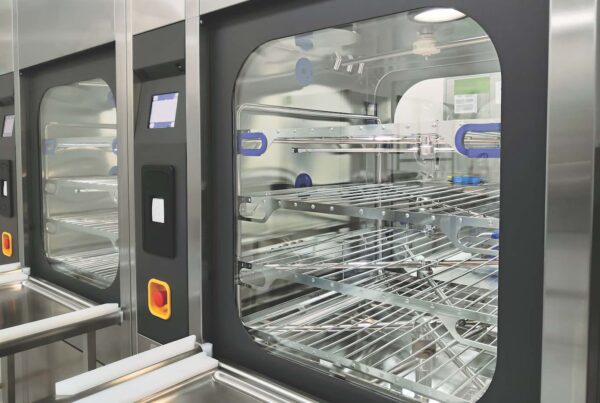Background
Following the Covid-19 pandemic, a hospital in upstate New York encountered several financial challenges. As with many hospitals in the US, these financial headwinds were related to significantly increased staffing costs and related to the influx of interim nursing and clinical staff substitutes. Additionally, a significant number of previously busy hospital’s surgeons either retired or left the area, leading to appreciably reduced surgical volume. To overcome this challenge, the hospital turned to Surgical Directions, a specialized implementation firm that concentrates on improving surgical services in hospitals and ambulatory settings.
Solutions
Surgical Directions implemented several value-base solutions to address the financial distress of the hospital, which focused on improving the quality, efficiency, and productivity within perioperative services. These solutions included a broad review and subsequent revamping of the entire patient throughput process, over a 4-month period, guided and driven by industry-leading comprehensive analytics:
- Facilitating a multidisciplinary Surgical Service Executive Committee, that included senior administra- tion, surgeon, nursing, and anesthesiologists to provide authority and guidance throughout the rollout process.
- Using a data-driven prescriptive approach to identify opportunities for increased productivity in the operating rooms. Surgeon access was reallocated to improve access while optimizing OR productivity, improving predictability and reducing overtime costs.
- Collaboration with nursing, surgeon office schedulers and anesthesiology to standardize pre-anesthesia testing protocols including rapid response to address abnormal results.
- Implementing a multi-disciplinary Collaborative Daily Schedule Review that reviews patient readiness up to 5 days in advance of their scheduled OR time. This proactive approach eliminates waste and quality issues and improve both patient and surgeon satisfaction.
- Identifying and mentoring frontline clinical leaders within the surgical services while working with senior hospital’s leadership team to develop a roadmap for their growth.
Results
Surgical Directions utilized its real-time analytic platform, Merlin, to generate reports for surgeons, the operating room, hospital administration, and the Surgical Services Executive Committee, highlighting opportunities for patient care and utilization improvement. This included identifying opportunities and strategies in scheduling and patient preparation that reduced length of stay, expensive weekend patient hospitalization and unscheduled readmissions. Surgical Directions also identified inappropriate pre-authorization issues—especially for elective surgeries—as a cause of lost revenue and recommended timely pre-authorization guidelines for patients. With revamped surgeon access, the hospital’s operating rooms experienced significant enhancements in both productivity and efficiency, reducing costs and increasing revenue. At six monthly post the engagement’s start, the hospital has experienced a 15% increase in facility operating room utilization. This increase opened additional previously unused capacity leading to a 250-case year-over-year increase in volume, primarily in orthopedic procedures. Additionally, the Collaborative Daily Schedule Review facilitated proactive patient management, timely starts, decreased cancellations, and improved quality of care and service. Apart from identifying opportunities for process improvement and cost reduction, Surgical Directions recognizes the significance of identifying potential future leaders within the organization. During its engagement with the hospital in upstate NY, Surgical Directions identified promising leaders within the surgical services department, including several physicians and nursing leaders, and collaborated with the hospital’s administration team to establish a development and growth plan for them. More than any other activity, building an effective and dedicated clinical and administrative leadership team will ensure ongoing success. Furthermore, they increased case volume by 250 cases year-over-year and reached an 85% utilization rate in March of 2023.
Conclusion
The hospital’s surgical services saw a notable boost in efficiency and productivity, thanks to the expert guidance provided by Surgical Directions. With a multidisciplinary committee and a data-driven approach, Surgical Directions tackled the hospital’s financial issues while driving continuous improvement. The tailored strategy resulted in positive financial outcomes, and the hospital’s continued use of the Merlin analytics platform further confirms its success. This real-time data platform facilitated transparent communication among hospital administration, the Surgical Service Executive Committee, and surgical teams, helping to identify opportunities for improvement and hold teams accountable for their performance. Surgical Directions’ ability to identify future leaders within the organization and to put the right person in the right place is an important value-add for clients. None of these improvements could have been possible without the executive team’s involvement and commitment to accountability, which played a pivotal role in driving change and improving processes. By establishing a Surgical Service Executive Committee, the hospital provided the necessary guidance and authority to ensure accountability throughout the rollout. The leadership team took ownership of the changes and fostered a culture of collaboration and accountability, leading to positive outcomes. The Collaborative Daily Schedule Review process proactively engaged surgical teams in improving efficiency, quality of care, and service. In summary, the success of the hospital’s engagement resulted from a combination of expert guidance from the embedded support of Surgical Directions working with a hospital’s leadership team committed to high-value patient care and accountability.



